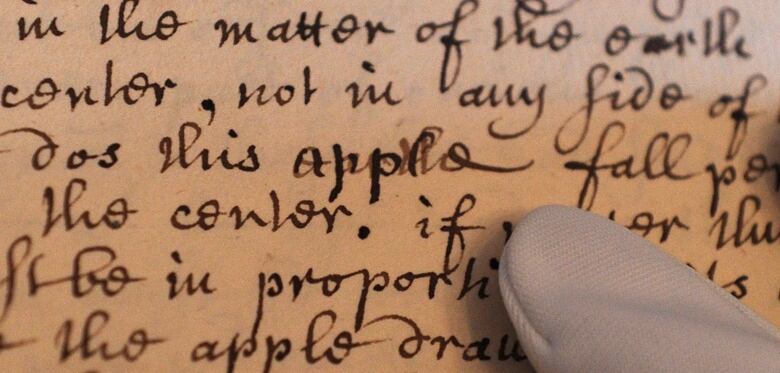Isaac Newton's apple trees continue to thrive at UBC
Newton probably wasn't clunked on the head with an apple, but the tree is still a touchstone

On a cold, sunny day in December, Jean-Michel Poutissou paused to admire the six apple trees that he once fought to save.
Poutissou came to Vancouver in 1972 when the trees were mere saplings on the University of British Columbiacampus.The trees planted outside theTRIUMF physics laboratory are descendants of the same tree that Sir Isaac Newton is said to have sat under as he pondered gravity.
Poutissou, a researcher emeritus at TRIUMF, said the trees "were happily growing" until the mid-1990s, when condo developers wanted a straight road from the campus to the homes. The trees were in danger of being axed.
"Nobody (involved in the development) cared too much about Newton apple trees," he said. "For them, they were in the way."

It took a campaign to convince the president of the university to intervene and save the roundabout where the trees are planted, he said.
Now nearly 50 years old, the trees are covered in buds that will fatten over the winter before producingfruit.
Poutissou said he hasn't tasted the apples for a very long time anddoesn't remember their exact flavour.
"It's not quite unlike a McIntosh, but don't hold me to that," he said,laughing.
Journey from England
The trees' journey began roughly in the late 1960s and early 1970s.
Grafts of the trees sent from the university in England where Newton worked arrived in Vancouver in 1971. Correspondence between UBC and Englandsuggests50 centimetres of snow blanketed Vancouver upon the grafts' arrival.
The two cuttings were further grafted and now six trees sit on the TRIUMF campus.
Today, the National Trust in the U.K. preserves the original apple tree at Woolsthorpe Manor, where Newton considered the laws of gravity. The tree is called Flower of Kent, a traditional variety, which produces cooking apples of varying sizes.
In 1820, a storm blew over the original tree but it survived and its legacy continued to grow.

The National Trust says there are many universities displaying clonesof the original tree. It's not known how the idea to send the trees around the world came about.
"It's likely this was spread more by word of mouth between universities," reads a statement from the National Trust.
In addition to the University of British Columbia, York University in Toronto also hosts Newton apple trees. Thanks to York professor Robert Prince, an astronaut who was one ofPrince's studentswas able to take the seeds of the tree with him on a space flightin 2006.












_(720p).jpg)


 OFFICIAL HD MUSIC VIDEO.jpg)
.jpg)



























































































